

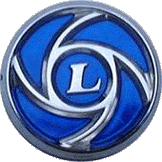
 |
 |
|||||||
© 2024 |
Technical Article: STAG WATER PUMP, AN ANATHEMATony Fox writes:Tales of Stag water pump mechanical failures have circulated for the last 10 years or more so why are we talking about it again? It is one of those things where you think it will never happen to you or your friends. Well, we have seen two of these happen locally to friends within the last 12 months and it is a major problem. I will try to outline what goes wrong here, the implications, what to check for and how to not get into trouble. The water pump is mechanically driven by a helical gear from the timing chain via a jackshaft, the same design is used for the TR7 and Saab 99 engines, these being in the same family of engines made by Triumph. This probably seemed like an elegant design on the drawing boards in Coventry at the Triumph Design Office in the 1960's. In practice it is a nightmare especially now we are in the twilight years of the cars' life, no factory support for parts and replacement pumps coming from anywhere on the planet that can make them cheaply. What is happening is that the drive gears of the pump shaft are incorrectly hardened and wear out VERY quickly in a manner that deposits shredded gear teeth all around the engine. The gear teeth wear completely away and then the pump stops rotating, no coolant flow and hey presto, overheating and possibly warped heads. The best-case scenario is that you detect the overheat quickly, stop the engine, do the repairs. Even so, you have deposited somewhere in the engine a handful of shredded gear teeth which need to be found. The worst-case scenario is that shredded gear debris gets to the jackshaft front bearing and causes it to seize solid. As the jackshaft seizes and stops turning the timing chain that drives it either breaks or jumps teeth. If the timing chain breaks the valves hit the pistons. If the chain doesn't break and just jumps not quite so bad but still a major repair job. In either case, the jackshaft will definitely be damaged which means it's replacement, more expense and work. If you are lucky, the block bearing is repairable without removing the engine. The present suppliers of new water pumps will swear blind there is nothing wrong with their parts and they have never heard of this, however, we have discovered otherwise so don't believe them. By examining the gear hardness on failed parts also new out of the box gears we find that the hardness specification is well below par, approx. half of what it should be. When we compare these gears with old ones taken from cars that have run for thousands of miles we find a remarkable difference, these old gears are to the factory specification and show almost no wear after considerable use. The original factory specification calls for hardness on the Rockwell scale of HRC61 to 62 and what we are finding are values of C30 plus or minus a little. The case hardened depth should be a mere 0.032 ins. but this is sufficient to last indefinitely it seems if done to the correct specification. This problem came to light around 10 years ago so obviously suppliers are still using very poor quality parts with disastrous results for the users. We had thought that these poor quality gears had worked their way out of the system by now but this unfortunately is not the case. There were a small number of replacement shafts correctly made in the UK but they seem to have dried up, they were quite expensive but in light of the alternative were a good choice. The person that had them made tells me he is not doing any more, at least not at the moment. The solution is to not use a 'new' pump at all but to simply rebuild your old one as you will almost certainly find the gear on your old one perfectly good with no wear apparent. The original gears appear to last a long time with regard to tooth wear and the pumps usually just need seals replaced. The repair kits available are fine so just use this method of rebuilding your old pump. If you need guidance on that let me know and I will send you instructions on rebuilding the pump assembly. If you are nervous about rebuilding a pump there is at least one company out there doing rebuilds at a price much lower than a new pump costs, so contact them. They even provide a two-year guarantee. As I mentioned above, not only Stag owners need to be aware of this, the same pump is used in the TR7 engine. As Saab used basically the same engine as the TR7 then the Saab 99 model is affected in the same way, however they may be lucky enough to get support from the Saab dealer, I have no experience in that regard. I can see to some extent where the problem has arisen, to achieve the correct hardness on the gears, it requires approx. 8 hours of hardening, tempering and annealing to achieve the correct finish, this is going to be costly for off shore suppliers most likely. However, it still no excuse for defective products particularly in view of the knock-on repercussions. A totally different approach to solving the problem has been taken by a couple of our members and that is to install an electric water pump. These are commercially available from a couple of sources but the most reasonable we have seen used are supplied by Davies Craig. This is an extremely good solution and works very well, so something else to consider if you are in the position of replacing your pump and originality doesn't concern you. So, in summary, be very careful if you plan on replacing the water pump on either a Stag or a TR7, the pitfalls are significant and potentially disastrous.
Posted on March 3, 2011 |
4/24/2024   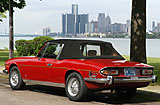 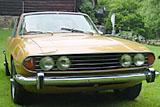 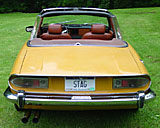 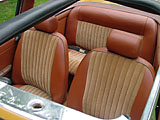 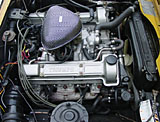 | ||||||